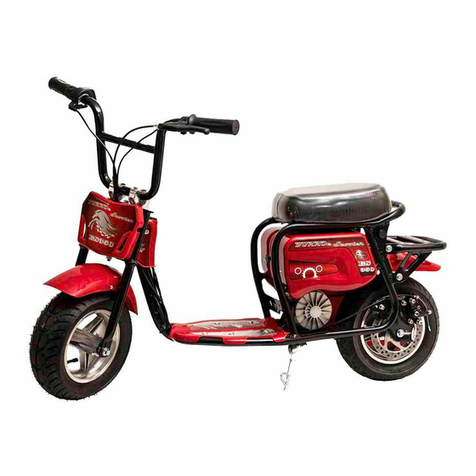
IMPORTANT SAFETY INFORMATION
As a parent, your child’s safety is your priority. Riding a minibike is very fun, but just
like riding a bicycle, bad decisions can result in injury or death. As a parent, you
can prevent accidents by making informed decisions about if, when and how your
child will ride. Always supervise your child when he/she is riding.
Before you allow your child to ride you need to determine if he/she is ready. Riding
readiness can vary from one person to another. Age and size are not the only
factors that help to determine riding readiness. There are three other factors that
you should consider before deciding if your child is ready to ride.
First, consider your child’s physical ability. A rider must be able to hold the minibike
up, and be able to reach all handlebar controls and steer the minibike accurately.
Second, consider your child’s athletic ability. It is a good idea if they can operate a
bicycle before operating any motorized vehicle. Determine if your child is a good
judge of speed and distance while riding a bicycle and that they react with proper
foot and hand actions. Any person who does not have good coordination, balance
and agility should not at- tempt to ride this motorized minibike.
Finally, determine their mental maturity. It is imperative that you are honest with
yourself when you answer the following questions: Does your child think through
problems and come to logical conclusions? Does your child obey the rules when
they ride their bicycle? If your child makes bad judgements, takes unnecessary
risks and ignores the rules, they should not ride this motorized minibike.
If you have determined that your child is ready to ride please remember the
following points:
• Never let your child ride without a helmet.
• Your child’s safety is your responsibility. Do not take it lightly.
• Never push your child to try things before they are ready.
• Always supervise your child when they are riding.
• Proper maintenance and upkeep of the minibike is key to safe riding.
Any modifications or improper accessories added to the
minibike, using parts that are not manufactured by Burromax can make it unsafe.
Burromax strongly recommends that you do not remove any of the original
equipment or make any modifications that alter the design and/or operation of the
TT40 minibike.





























